Prof. Dr. Ineke Braakman, Utrecht University
i.braakman@uu.nl
Project Coordinator
Project Involvement
WP1 Aim 1: Characterize and set the stage for client proteins in cells.
WP1 Aim 2: Inventory of QC networks: What is the proteostasis landscape of LoF and GoF clients?
WP1 Aim 3: What are the bottlenecks (rate-limiting steps) in the landscapes?
WP2 Aim 1: Characterize and set the stage for client proteins in vitro.
WP2 Aim 3: Decision making on folding versus degradation.
WP3 Aim 1: Physicochemical control over the fate of client proteins.
WP3 Aim 2: Improve fate/triage of protein clients.
WP3 Aim 3: Unified theory for protein QC/triage.

Research Summary
The Braakman-van der Sluijs lab studies molecular mechanisms of (membrane) protein folding in the endoplasmic reticulum. Ineke Braakman and Peter van der Sluijs are experts in analysis of newly synthesized protein folding, its regulation by cellular factors, and trafficking pathways in cells. Accurate and timely delivery of correctly folded proteins is at the heart of cell function, cell -cell communication, host defense, development, and human health. Misfolded proteins are the root cause of many genetic diseases and targeting misfolded proteins with small molecules emerged as a powerful approach to treat disease as shown for cystic fibrosis. Folding of membrane proteins occurs in three topologically distinct spaces and current research lines include unraveling the chaperone machineries that help to fold a membrane protein in the cyoplasm, the endoplasmic reticulum membrane and on the lumenal side of endoplasmic reticulum and on the understanding how candidate drugs can correct misfolded proteins.
5 key outputs
Together with Dr. Peter van der Sluijs
1. Van der Sluijs P, Hoelen H, Schmidt A, Braakman I (2024) The folding pathway of ABC transporter CFTR: effective and robust. J Mol Biol Apr 26: 168591.
This review provides deep insights into CFTR folding, acquired recently and to a large extent from our lab. This information and some manuscripts in preparation will be the basis for the research in FLOW.
2. Im J, Hillenaar T, Yeoh HY, Sahasrabudhe P, Mijnders M, van Willigen M, Hagos A, de Mattos E, van der Sluijs P, Braakman I (2023) ABC-transporter CFTR folds with high fidelity through a modular, stepwise pathway. Cell Mol Life Sci. 80: 33.
We established that CFTR folds in 2 distinct stages and provided mechanistic insight that the clinical corrector drugs bypass the stage-1 defect and enable stage 2. Corrected F508del CFTR ends up with its domains assembled onto a still-defective NBD1.
3. McCaul N, Quandte M, Bontjer I, Van Zadelhoff G, Land A, Crooks ET, Binley JM, Sanders RW, Braakman I (2021) Intramolecular quality control: HIV-1 Envelope gp160 signal-peptide cleavage as a functional folding checkpoint. Cell Rep 36:109646.
Here we explain mechanism and regulation of Env folding by the signal peptide and vice versa. A cysteine in the signal peptide plays a crucial role in disulfide isomerization required for Env folding, and the completion of folding causes removal of the signal peptide, thereby ending isomerization.
4. Van der Zand A, Gent J, Braakman I*, Tabak HF* (2012) Biochemically distinct vesicles from the endoplasmic reticulum fuse to form peroxisomes. Cell 149:397-409. (*co-corresponding author).
A defining paper developing a new paradigm for peroxisome biogenesis. This paper was featured with a ‘Comment’ in Nat Rev Mol Cell Biol (2012) and Nat Chem Biol (2012).
5. Kleizen B., van Vlijmen T, de Jonge H, Braakman I (2005) CFTR folds predominantly co-translational. Mol Cell 20:277-87.First paper showing that folding of the domains of ABCC-type transporter CFTR is largely co-translational.
Prof. Dr. Mireille Claessens, University of Twente
m.m.a.e.claessens@utwente.nl
Management Board
Project Involvement
WP1 Aim 1: Characterize and set the stage for client proteins in cells.
WP1 Aim 2: Inventory of QC networks: What is the proteostasis landscape of LoF and GoF clients?
WP1 Aim 3: What are the bottlenecks (rate-limiting steps) in the landscapes?
WP2 Aim 1: Characterize and set the stage for client proteins in vitro.
WP2 Aim 2: Decision making on folding versus aggregation and aggregation versus aggregation.
WP2 Aim 3: Decision making on folding versus degradation.
WP3 Aim 1: Physicochemical control over the fate of client proteins.
WP3 Aim 2: Improve fate/triage of protein clients.
WP3 Aim 3: Unified theory for protein QC/triage.
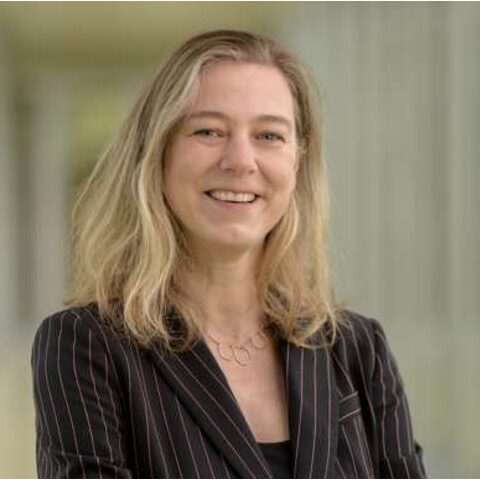
Research Summary
The Claessens lab uses methods from physics, biochemistry, and molecular biology to explore how the physicochemical properties of proteins influence biological processes and diseases. One of their research focuses is on the intrinsically disordered protein α-synuclein, particularly in relation to Parkinson’s disease. Their research spans all aspects of this protein, including its physicochemical properties, physiological functions, loss of function, aggregation, strategies to counteract aggregation, and its potential as a disease biomarker. The lab is multidisciplinary and operates at the intersection of physics, chemistry, and biology. To achieve their research objectives, Claessens and her team study proteins using both in vitro reconstituted systems and cellular environments. They utilize both newly developed and state-of-the-art optical microscopy and spectroscopy techniques, ranging from bulk to single-molecule analyses.
5 key outputs
1. Semerdzhiev SA, Fakhree MAA, Segers-Nolten I, Blum C, Claessens MMAE (2021) Interactions between SARS-CoV-2 N-protein and α-synuclein accelerate amyloid formation. ACS Chem Neurosci. 13:143-50.
This paper addresses a potential trigger for Parkinson’s disease onset. We show that interactions with a virus protein disturb α-synuclein proteostasis in cells and induce α-synuclein aggregation in vitro. We thereby established a potential molecular link between virus infections and Parkinson’s disease.
2. Fakhree MAA, Engelbertink SAJ, Van Leijenhorst-Groener KA, Blum C, Claessens MMAE (2019) Cooperation of helix insertion and lateral pressure to remodel membranes. Biomacromolecules. 20:1217-23.
Here we shed light on the physiological function of α-synuclein and its role in endocytosis. We establish the physical mechanisms by which the binding of α-synuclein induces membrane curvature using in vitro experiments and model calculations.
3. Semerdzhiev SA, Lindhoud S, Stefanovic A, Subramaniam V, Van der Schoot P, Claessens MMAE (2018) Hydrophobic-interaction-induced stiffening of alpha-synuclein fibril networks. Phys Rev Lett. 120: 208102.
The results from this paper give insight into why α-synuclein fibrils interact with each other and with other cellular components to form the Lewy bodies found in Parkinson’s disease. In the paper we show that hydrophobic residues are exposed at the amyloid fibril surface which enables both self interactions and sequestration of other proteins and lipids.
4. Fakhree MAA, Segers-Nolten I, Blum C, Claessens MMAE (2018) Different conformational subensembles of the intrinsically disordered protein α-synuclein in cells. J Phys Chem Lett. 9:1249-53.
This paper shows, for the first time, that different conformational subensembles of the protein exist in cells. This finding suggests that α-synuclein has multiple functions within a protein interaction network.
5. Iyer I, Roeters SJ, Kogan V, Woutersen S, Claessens MMAE*, Subramaniam V. (2017) C-terminal truncated α-synuclein fibrils contain strongly twisted β-sheets. J Am Chem Soc. 139:15392-400 (* corresponding author).
This paper has relevance in the context of the cellular quality control system because different amyloid fibril polymorphs may be processed differently. We show that a C-terminally truncated form of α-synuclein adopts a different morphology and cross β-sheet fold when it forms amyloid fibrils.
Prof. Dr. Friedrich Förster, Utrecht University
f.g.forster@uu.nl
Management Board
Project Involvement
WP1 Aim 1: Characterize and set the stage for client proteins in cells.
WP1 Aim 2: Inventory of QC networks: What is the proteostasis landscape of LoF and GoF clients?
WP2 Aim 1: Characterize and set the stage for client proteins in vitro.
WP2 Aim 2: Decision making on folding versus aggregation and aggregation versus aggregation.
WP2 Aim 3: Decision making on folding versus degradation.
WP3 Aim 1: Physicochemical control over the fate of client proteins.
WP3 Aim 3: Unified theory for protein QC/triage.

Research Summary
Friedrich Förster specializes on electron cryo-microscopy imaging to elucidate the biogenesis and degradation of proteins at organelle membranes. To this end he uses cryogenic electron tomography (cryo-ET), which does neither require extensive purification of assemblies nor harsh cellular sample preparation methods such as dehydration, chemical fixation, staining and chemical cross-linking. Förster and his team pioneered computational statistical analysis of 3D images of copies of the same type of macromolecular complex, which enables high-resolution insights into complexes from the noisy raw data (subtomogram averaging and classification). Advances in sample preparation, data acquisition and analysis made cryo-ET the premier approach to visualize macromolecular complexes in their physiological environment. The Förster lab has used this approach to capture protein biogenesis at the ER at atomic detail and the lab also uses cryo-EM single particle analysis of reconstituted complexes for structure function analysis of specific biochemical processes.
5 key outputs
1. Gemmer M, Chaillet ML, van Loenhout J, Cuevas Arenas R, Vismpas D, Gröllers-Mulderij M, Koh FA, Albanese P, Scheltema R, Howes SC, Kotecha A, Fedry J*, Förster F* (2023) Visualization of translation and protein biogenesis at the ER membrane. Nature (accepted) (*co-corresponding author).
Extensive statistical analysis of ribosomes bound to the ER membrane reveals distinct translation-elongation intermediates in polysomes and different biogenesis complexes that govern nascent protein translocation, membrane insertion, glycosylation, and folding.
2. Liaci AM, Steigenberger B, Telles de Souza PC, Tamara S, Grollers-Mulderij M, Ogrissek P, Marrink SJ, Scheltema RA, Förster F (2021) Structure of the human signal peptidase complex reveals the determinants for signal peptide cleavage. Mol Cell 81:3934-48.
Our atomic structures of SPC paralogs show that the active site thins the bilayer, which generates specificity for signal peptides based on the length of their hydrophobic segments.
3. Braunger K, Pfeffer S*, Shrimal S, Gilmore R, Berninghausen O, Mandon EC, Becker T, Förster F*, Beckmann R* (2018) Structural basis for coupling protein transport and N-glycosylation at the mammalian endoplasmic reticulum. Science 360:215-9 (*co-corresponding author).
We provide a detailed structural view on the molecular architecture of the cotranslational machinery for N-glycosylation, providing the basis for a mechanistic understanding of glycoprotein biogenesis in the ER.
4. Pfeffer S, Dudek J, Schaffer M, Ng BG, Albert S, Plitzko JM, Baumeister W, Zimmermann R, Freeze HH, Engel BD*, Förster F* (2017) Dissecting the molecular organization of the translocon-associated protein complex. Nat Commun 8:14516. (*co-corresponding author).
We revealed the molecular architecture of the TRAP complex, which advances our understanding of membrane protein biogenesis and sheds light on the role of TRAP in human congenital glycosylation disorders.
5. Beck F, Unverdorben P, Bohn S, Schweitzer A, Pfeifer G, Sakata E, Nickell S, Plitzko JM, Villa E, Baumeister W*, Förster F* (2012) Near-atomic resolution structural model of the yeast 26S proteasome. Proc. Natl. Acad. Sci. USA 109:14870-5. (*co-corresponding author).
First comprehensive atomic model of the 26S proteasome, the protease responsible for regulated inner-cellular degradation, based on a 6-7 Å resolution cryo-EM single particle structure.
Dr. Mark Hipp, UMCG, Groningen
m.s.hipp@umcg.nl
Management Board
Project Involvement
WP1 Aim 1: Characterize and set the stage for client proteins in cells.
WP1 Aim 2: Inventory of QC networks: What is the proteostasis landscape of LoF and GoF clients?
WP1 Aim 3: What are the bottlenecks (rate-limiting steps) in the landscapes?
WP3 Aim 1: Physicochemical control over the fate of client proteins.
WP3 Aim 2: Improve fate/triage of protein clients.
WP3 Aim 3: Unified theory for protein QC/triage.
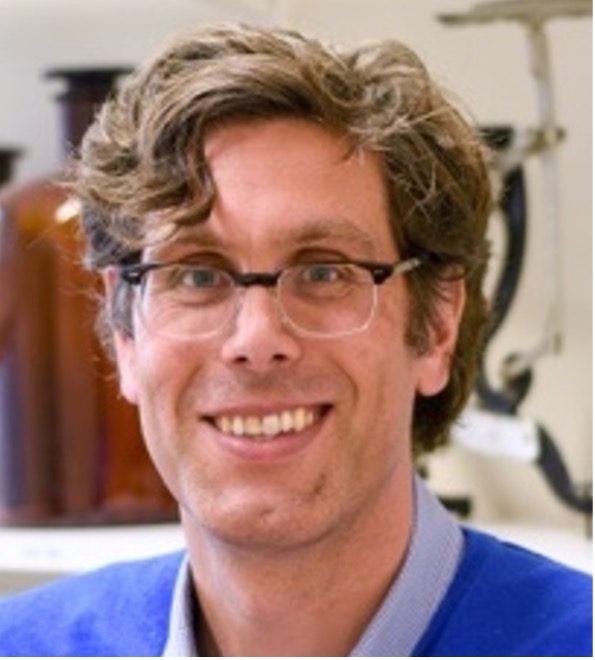
Research Summary
Deposition of protein aggregates is the hallmark of an increasing number of diseases, including neurodegenerative disorders as well as type II diabetes, peripheral amyloidoses and cardiovascular disease. How exactly aggregates are linked with cytotoxicity and neuronal death has remained enigmatic.
The Hipp Lab studies the interactions of aggregation-prone proteins with the cellular quality control machinery and uses biochemical and cell biological approaches to gain insight into the molecular basis of disorders associated with aberrant protein folding. The long-term goal of the research within the Hipp Lab is to understand the mechanisms by which protein misfolding and aggregation cause cellular toxicity and how molecular chaperones and cellular stress response pathways are involved in this process.
The Hipp lab is part of the new MoHAD Research Institute (Mechanisms of Health, Ageing, and Disease) at the University Medical Center Groningen, where Mark Hipp leads the program “Proteostasis.
5 key outputs
1. Frottin F, Pérez-Berlanga M, Hartl FU, Hipp MS (2021) Multiple pathways of toxicity induced by C9orf72 dipeptide repeat aggregates and G4C2 RNA in a cellular model. eLife 10:e62718.
This paper describes the effects of nuclear and cytosolic versions of ALS-related dipeptide repeat proteins, but also of RNA repeats on different aspects of proteostasis and phase-separated compartments within the nucleus. This work showed that different types of aggregates originating from the same protein can disrupt different parts of the proteostasis network. The new tools that were developed for this project allow distinguishing between RNA and protein mediated toxicity.
2. Frottin F, Schueder F, Tiwary S, Gupta R, Körner R, Schlichthaerle T, Cox J, Jungmann R, Hartl FU, Hipp MS (2019) The nucleolus functions as a phase-separated protein quality control compartment. Science 365:342-7.
We generated novel tools that allow to describe the nucleolus as a protein quality control compartment that can act as temporary buffer for proteotoxic insults. This finding can explain a diverse set of previous observations going back to some of the very first reports of the cellular stress response; a role for the nucleolus in protein quality control is now incorporated in many reviews about nucleolar function.
3. Woerner AC, Frottin F, Hornburg D, Feng LR, Meissner F, Patra M, Tatzelt J, Mann M, Winklhofer KF, Hartl FU, Hipp MS (2016) Cytoplasmic protein aggregates interfere with nucleocytoplasmic transport of protein and RNA. Science 351:173-6.
Here we provided proof that the nucleus is able to handle aggregation-prone proteins in a different way than the cytoplasm does. The use of targeted artificial aggregation-prone proteins without repeat containing mRNAs or endogenous binding partners allowed to clearly distinguish protein-mediated effects from mRNA-mediated disruptions of cellular QC. This paper was featured in a “Perspective” in Science (2016), a “research highlight” in Nat Rev Mol Cell Biol (2016), and together with a manuscript from Fred Gage (Mertens 2015, Cell Stem Cell) as a “Spotlight” in Trends Neurosci (2016).
4. Ripaud L, Chumakova V, Antonin M, Hastie AR, Pinkert S, Körner R, Ruff KM, Pappu RV, Hornburg D, Mann M, Hartl FU, Hipp MS (2014) Overexpression of Q-rich prion-like proteins suppresses polyQ cytotoxicity and alters the polyQ interactome. Proc Natl Acad Sci U S A 111:18219-24.
This paper revealed that aggregation-prone wildtype proteins can reduce the toxicity of aggregation-prone mutant proteins and developed a model that suggested that shielding of reactive aggregate surfaces is a way to reduce aggregate toxicity.
5. Hipp MS, Park SH, Hartl FU (2014) Proteostasis impairment in protein-misfolding and -aggregation diseases. Trends Cell Biol 24:506-14.
In this review, I presented my model of the vicious cycle that connects proteostasis collapse and protein aggregation for the first time. Since this review, I was invited to expand these ideas in additional review articles. The diagram I created for this concept is now widely used by colleagues for teaching.
Prof. Dr. Stefan Rüdiger, Utrecht University
s.g.d.rudiger@uu.nl
Management Board
Project Involvement
WP1 Aim 3: What are the bottlenecks (rate-limiting steps) in the landscapes?
WP2 Aim 1: Characterize and set the stage for client proteins in vitro.
WP2 Aim 2: Decision making on folding versus aggregation and aggregation versus aggregation.
WP2 Aim 3: Decision making on folding versus degradation.
WP3 Aim 1: Physicochemical control over the fate of client proteins.
WP3 Aim 2: Improve fate/triage of protein clients.
WP3 Aim 3: Unified theory for protein QC/triage.
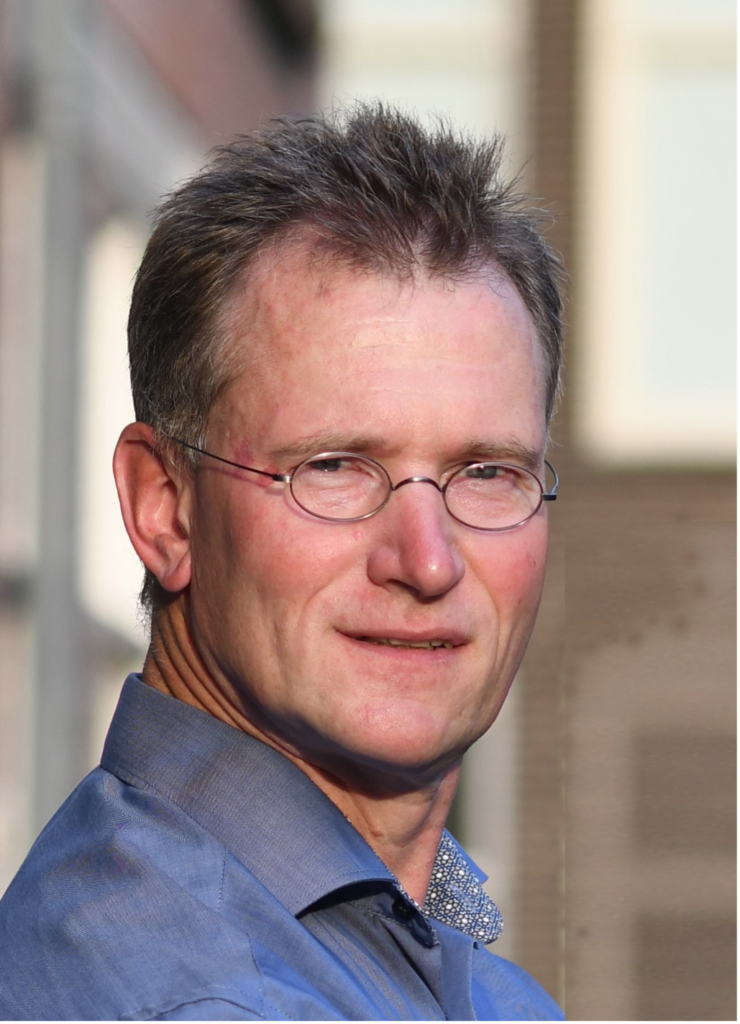
Research Summary
Stefan Rüdiger aims to provide a molecular understanding of how cells ensure protein folding and homeostasis, and to exploit this knowledge for targeting protein folding diseases. A key achievement was identifying the general function of HSP90 chaperones as the downstream optimizer of the HSP70 chaperone system. Currently the Rüdiger group applies the insights on chaperone mechanism to protein quality control of disease. The group develop peptide-based compounds to target protein aggregates at the earliest possible stage (“Fibril paints”), as PROTAC-like drug leads. His team studies the accessibility of (patient-derived) protein aggregates for the protein quality control machinery. The Rüdiger group also advances the technological state-of-the-art to address biochemical proteostasis questions. A recent example is the application of flow-induced dispersion analysis (FIDA) to protein fibrils, which allows assessing growth and shrinkage of patient-derived protein fibrils upon interaction with protein quality control factors and drug leads.
5 key outputs
1. Koopman MB, Ferrari L, Rüdiger SGD (2022) How do protein aggregates escape quality control in neurodegeneration? Trends Neurosci 45:257-71
Here we present concepts for possible therapeutic interventions in proteinopathies in view of recent breakthroughs in protein quality control, fibril structures and liquid-liquid phase separation.
2. FerrariL, StucchiR, Konstantoulea K, van de Kamp G, KosR, GeertsWJC, BezouwenLS, FörsterFG, Altelaar M, HoogenraadCC, Rüdiger SGD (2020) Arginine p-stacking drives binding to fibrils of the Alzheimer protein Tau. Nat Commun 11:571
This paper shows that Tau fibrils attract aberrant interactors by pi-stacking forces. It shows that the grammar rules of liquid-liquid phase separation also apply to other types of protein-protein interactions. It provides a mechanistic framework for the toxicity of Tau aggregates in Alzheimer.
3. Aragonès Pedrola J, Dekker FA, Garfagnini T, Mayer G, Koopman MB, Förster F, Hoozemans JJM, Jensen H, Friedler A, Rüdiger SGD (2023) Fibril Paint to detect Amyloids and determine Fibril Length. BioRXiv.
4. Morán Luengo T, Kityk R, Mayer MP*, Rüdiger SGD* (2018) HSP90 breaks the deadlock of the HSP70 chaperone system. Mol Cell70:545-52 (cover story; * co-corresponding author)
We demonstrate the mode of action how HSP70 and HSP90 cooperate in assisting protein folding. HSP70 chaperone inflicts a folding block, which is resolved by HSP90. HSP90 allows the protein to continue folding without engaging in repeated cycles of binding and release by HSP70. This concept is conserved from bacteria to man. We demonstrate that HSP70 and HSP90 are together the most abundant of all chaperones and they constitute the central folding highway of the cell.
5. Karagöz GE, Duarte AMS, Akoury E, Ippel H, Biernat J, Morán Luengo T, Radli M, Didenko T, Nordhues BA, Veprintsev DB, Dickey CA, Mandelkow E, Zweckstetter M, Boelens R, Madl T*, Rüdiger SGD* (2014) HSP90-Tau complex reveals molecular basis for specificity in chaperone action. Cell 156:963-74 (* co-corresponding author)
In this paper we present a structural model for the HSP90 chaperone in complex with the Alzheimer protein Tau. We combine methyl-TROSY NMR techniques with SAXS to overcome the technical difficulties facing when analyzing an asymmetric complex of a disordered protein with a large dimer. We provide for the first time a map of the substrate binding site of HSP90, which reveals how these properties place it late on the chaperoned folding path. We also show that HSP90 targets the aggregation-prone repeat region, providing insights on chaperone action in Alzheimer.
Prof. Dr. Alfred Vertegaal, LUMC, Leiden
a.c.o.vertegaal@lumc.nl
Management Board
Project Involvement
WP1 Aim 2: Inventory of QC networks: What is the proteostasis landscape of LoF and GoF clients?
WP3 Aim 3: Unified theory for protein QC/triage.

Research Summary
The Vertegaal lab studies ubiquitin and small ubiquitin-like modifier (SUMO) signaling networks using proteomics and functional molecular cell biology. Accurate and timely degradation of misfolded proteins by the ubiquitin-proteasome system is key to maintaining proteome homeostasis upon chaperone failure, prevents the build-up of toxic protein aggregates and yields amino acids required for synthesis of new proteins. Reduced capacity of the ubiquitin-proteasome system contributes to aging-related diseases, including Alzheimer’s disease and dementia. Proteotoxic stress strongly induces SUMO-modification of proteins and a large fraction of SUMO-modified proteins are subsequently ubiquitinated and degraded by the proteasome, highlighting cooperation between SUMO and the ubiquitin-proteasome system. SUMO-targeted ubiquitin ligases (STUbLs) and SUMO-targeted ubiquitin proteases (STUPs) play key roles in this type of crosstalk. Linking the wealth of ubiquitin E3 ligases to targets to maintain proteome homeostasis is a key challenge in the field.
5 key outputs
1. Kumar S, Schoonderwoerd MJA, Kroonen JS, de Graaf IJ, Sluijter M, Ruano D, González-Prieto R, Verlaan-de Vries M, Rip J, Arens R, de Miranda NFCC, Hawinkels LJAC, van Hall T, Vertegaal ACO (2022) Targeting pancreatic cancer by TAK-981: a SUMOylation inhibitor that activates the immune system and blocks cancer cell cycle progression in a preclinical model. Gut 71:2266-83.
This paper uncovered the working mechanism of the Small Ubiquitin-like Modifier E1 inhibitor TAK-981 and demonstrated its potential to treat pancreatic cancer.
2. Trulsson F, Akimov V, Robu M, van Overbeek N, Berrocal DAP, Shah RG, Cox J, Shah GM, Blagoev B, Vertegaal ACO (2022) Deubiquitinating enzymes and the proteasome regulate preferential sets of ubiquitin substrates. Nat Commun 13:2736.
We identified proteome-wide ubiquitin signaling networks regulated by ubiquitin proteases or the proteasome in a site-specific manner. This paper includes a large proteomics dataset.
3. Liebelt F, Sebastian RM, Moore CL, Mulder MPC, Ovaa H, Shoulders MD, Vertegaal, ACO (2019) SUMOylation and the HSF1-regulated chaperone network converge to promote proteostasis in response to heat shock. Cell Rep 26:236-49.e4.
We found that the HSF1-regulated chaperone network and Small Ubiquitin-like Modifiers cooperate to promote proteostasis upon proteotoxic stress. This paper includes a large proteomics dataset.
4. Hendriks IA, D’Souza RC, Yang B, Verlaan-de Vries M, Mann M, Vertegaal ACO (2014) Uncovering global SUMOylation signaling networks in a site-specific manner. Nat Struct Mol Biol 21:927-36.
Here, we identified proteome-wide Small Ubiquitin-like Modifier signaling networks regulated by proteotoxic stress, SUMO proteases, or the proteasome in a site-specific manner. This paper includes a large proteomics dataset.
5. Schimmel J, Eifler K, Sigurðsson JO, Cuijpers SA, Hendriks IA, Verlaan-de Vries M, Kelstrup CD, Francavilla C, Medema RH, Olsen JV, Vertegaal ACO (2014) Uncovering SUMOylation dynamics during cell-cycle progression reveals FoxM1 as a key mitotic SUMO target protein. Mol Cell 53:1053-66.
We uncovered a key role for Small Ubiquitin-like Modifiers in cell cycle progression. This paper includes a large proteomics dataset.
Dr. Arnold Boersma, Utrecht University
a.j.boersma@uu.nl
Project Involvement
WP1 Aim 1: Characterize and set the stage for client proteins in cells.
WP1 Aim 2: Inventory of QC networks: What is the proteostasis landscape of LoF and GoF clients?
WP1 Aim 3: What are the bottlenecks (rate-limiting steps) in the landscapes?
WP2 Aim 2: Decision making on folding versus aggregation and aggregation versus aggregation.
WP2 Aim 3: Decision making on folding versus degradation.
WP3 Aim 1: Physicochemical control over the fate of client proteins.
WP3 Aim 3: Unified theory for protein QC/triage.

Research Summary
The Boersma lab studies the consequences of the environment of a protein on its folding, chaperone-client interactions, and aggregation. In a cell, the environment of a protein is highly nonideal, with high macromolecular crowding, low free water content, and an array of ions and small molecules. By reconstructing the protein’s native environment in artificial cells and comparison with living cells, an understanding of protein behavior in conjunction with its environment is gained. The group makes these artificial cells with microfluidics to obtain reproducible and well-controlled artificial cells. Artificial cells and living cells are characterized and compared using genetically encoded probes that the group develops tailor-made for the research question at hand.
5 key outputs
1. Guerzoni LP, … , Boersma AJ (2022) High macromolecular crowding in liposomes from microfluidics. Adv Sci 9:e2201169.
A method to generate cell-mimetic artificial cells by making the first minimal oil-containing liposomes with high internal macromolecular crowding using microfluidics.
2. Wan Q, … , Boersma AJ (2022) A FRET-based method for monitoring structural transitions in protein self-organization. Cell Rep Meth 2:100184.
A single genetic intervention to probe protein assembly, condensation, or aggregation structure, with high precision and in a high-throughput manner.
3. Mouton SN, … , Boersma AJ*, Veenhoff LM* (2020) A physicochemical perspective of aging from single-cell analysis of pH, macromolecular and organellar crowding in yeast. eLife 9:e54707 (* co-corresponding author).
Providing the first roadmap on how physicochemical parameters change during yeast aging and how this varies between cells.
4. Liu B, Poolman B, Boersma AJ (2017) Ionic strength sensing in living cells. ACS Chem Biol 12:2510-4.
The first sensor for ionic strength in living cells.
5. Boersma AJ, Zuhorn IS, Poolman B (2015) A sensor for quantification of macromolecular crowding in living cells. Nat Meth 12:227-9.
First sensor for macromolecular crowding in living cells.
Prof. Dr. Martijn Huijnen, Radboud UMC, Nijmegen
martijn.huijnen@radboudumc.nl
Project Involvement
WP1 Aim 2: Inventory of QC networks: What is the proteostasis landscape of LoF and GoF clients?
WP1 Aim 3: What are the bottlenecks (rate-limiting steps) in the landscapes?
WP2 Aim 2: Decision making on folding versus aggregation and aggregation versus aggregation.
WP3 Aim 3: Unified theory for protein QC/triage.

Research Summary
Martijn Huijnen‘s research focus is on the exploitation of ‘omics data to predict the function of molecular systems and unravel their evolution. On the one hand, his team has developed methods to analyze various types of omics data, including genomics, gene expression and proteomics data, e.g. in developing the STRING tool. On the other hand, he has applied those methods to specific proteins and pathways. In this he has collaborated closely with experimental researchers to validate predictions about biomedically relevant mitochondrial and ciliary protein’s functions, uncovering numerous disease genes and linking them to their pathology. He recently has developed methods to analyse complexome profiling data to extract reliable protein-protein interactions and delineate protein complex assembly. His specific emphasis is on delineating the evolution of molecular systems and using the acquired knowledge to better understand them. He emphasizes the usage and development of transparent method to ensure interpretability of the results.
5 key outputs
1. Van Strien J, … , Huynen MA (2021) CEDAR, an online resource for the reporting and exploration of complexome profiling data. Biochim Biophys Acta, Bioenerg 1862:148411.
Database with all complexome profiling data coupled to analysis tools and to the introduction of the standard for the reporting of those data.
2. van Esveld SL, …, Huynen MA (2021) A prioritized and validated resource of mitochondrial proteins in Plasmodium identifies unique biology. mSphere 6:e0061421.
Elucidation of the Plasmodium falciparum mitochondrial proteome through large scale data integration coupled with experimental validation.
3. Sánchez-Caballero L, …, Huynen MA*, Nijtmans LG (2020) TMEM70 functions in the assembly of complexes I and V. Biochim Biophys Acta, Bioenerg 1861:148202 (* corresponding author).
Elucidation of the function of TMEM70 in the assembly of mitochondrial complexes through integrated analysis of proteomics and evolutionary data.
4. Lambacher NJ, …, Huynen MA*, Thauvin-Robinet C*, Blacque OE* (2016) TMEM107 recruits ciliopathy proteins to subdomains of the ciliary transition zone and causes Joubert syndrome. Nat Cell Biol 18:122-31(*co-corresponding author).
Discovery of a new protein of the ciliary transition zone through omics data analysis coupled to experimental verification.
5. Gabaldón T and Huynen MA (2003) Reconstruction of the proto-mitochondrial metabolism. Science 301:609.
Prof. Dr. Harm Kampinga, UMCG, Groningen
h.h.kampinga@umcg.nl
Project Involvement
WP1 Aim 1: Characterize and set the stage for client proteins in cells.
WP1 Aim 2: Inventory of QC networks: What is the proteostasis landscape of LoF and GoF clients?
WP1 Aim 3: What are the bottlenecks (rate-limiting steps) in the landscapes?
WP3 Aim 1: Physicochemical control over the fate of client proteins.
WP3 Aim 2: Improve fate/triage of protein clients.
WP3 Aim 3: Unified theory for protein QC/triage.
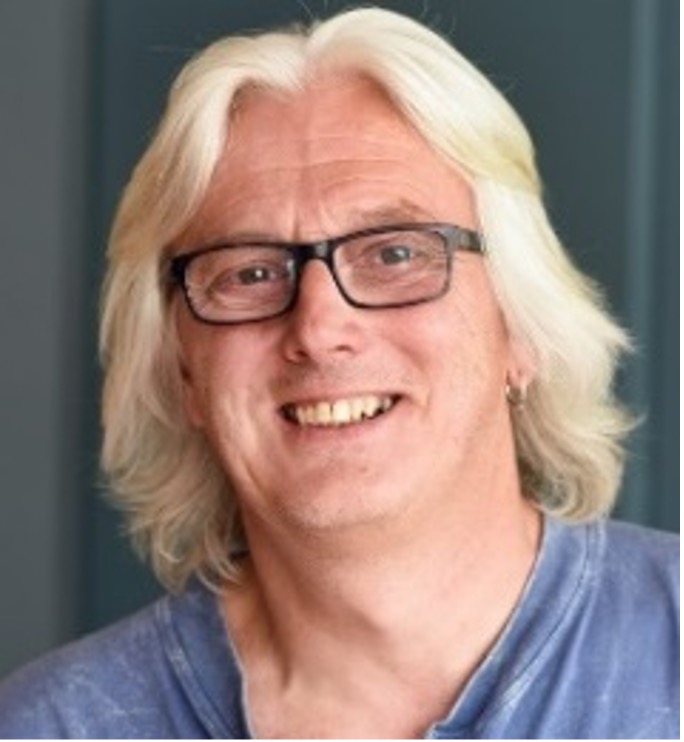
Research Summary
Harm Kampinga studies how Heat Shock Proteins (HSPs) are functionally regulated to maintain cellular protein homeostasis, especially in relation to the development of age-related, neurodegenerative diseases (in particular CAG repeat expansion diseases) and (cardiac) muscular diseases. The focus of his research relates to the functional diversity of Hsp70 chaperone machines and how this is steered by the J-domain proteins (JDPs) and Nucleotide Exchange Factors (NEF) and how this machine functional interacts with small HSPs, chaperones that can buffer age-related proteome instability. He also studies how mutations in chaperones can lead to disease. Major discoveries from his lab include the asymmetric segregation of protein damage in stem cells, the functional diversity of HSPs and their role in and mechanism of dealing with different disease-associated protein aggregation diseases, including the discovery of set of specific JDP family protein members, DNAJB6 and DNAJB8, with an exquisitely high potency to delay amyloidogenesis.
1. Kuiper EFE*, …, Veenhoff LM*, Kampinga HH*, Bergink S* (2022) The molecular chaperone DNAJB6 provides surveillance of FG-Nups and is required for interphase nuclear pore complex biogenesis. Nat Cell Biol 24:1584–94 (* co-corresponding author).
First discovery of a molecular chaperone required for controlling phase transition of FG-Nups, relevant to nuclear pore biogenesis
2. Thiruvalluvan A, …, Kampinga HH (2020) DNAJB6, a key factor in neuronal sensitivity to amyloidogenesis. Mol Cell 20:30115-5.
First demonstration of a molecular chaperone being critical to the neuronal sensitivity to aggregation of an endogenously expressed, full-length polyglutamine protein in human derived cells.
3. Meister-Broekem M, …, Kampinga HH (2018) Myopathy associated BAG3 mutations lead to protein aggregation by stalling HSP70 networks. Nat Commun 9:5342.
In depth analysis showing how a mutation in a chaperone (chaperonopathy) can lead to the rapid and progressive collapse of protein homeostasis.
4. Kakkar V, …, Kampinga HH (2016) The S/T-rich motif in the DNAJB6 chaperone delays polyglutamine aggregation and the onset of disease in a mouse model. Mol Cell 62:1-12.
In depth analysis on the molecular action of the chaperone DNAJB6 in delaying the toxic aggregation and in vivo degeneration caused by polyglutamine proteins
5.Rujano MA, …, Kampinga HH (2006) Polarized asymmetric inheritance of accumulated protein damage in higher eukaryotes. PloS Biol 4:2325-35.
First demonstration in metazoa for cellular rejuvenation through asymmetric segregation of accumulated protein damage.
Dr. Monique Mulder, LUMC, Leiden
m.p.c.mulder@lumc.nl
Project Involvement
WP1 Aim 2: Inventory of QC networks: What is the proteostasis landscape of LoF and GoF clients?
WP2 Aim 3: Decision making on folding versus degradation.
WP3 Aim 1: Physicochemical control over the fate of client proteins.
WP3 Aim 2: Improve fate/triage of protein clients.

Research Summary
The Mulder lab studies the intricate world of protein post-translational modification, focusing particularly on ubiquitin and ubiquitin-like proteins. Our work delves into understanding how ubiquitin directs the degradation of misfolded proteins through the proteasome, a critical process for maintaining cellular balance and preventing the buildup of toxic protein aggregates implicated in various diseases. Operating at the nexus of chemistry and cell biology, we unravel the complex mechanisms by which ubiquitin tags misfolded proteins for proteasomal degradation. With a multidisciplinary approach integrating biochemical, chemical, and therapeutic perspectives, our research sheds light on the role of ubiquitin in disease pathology. By investigating enzymatic cascades and developing small molecule modulators, we strive to uncover molecular pathogenesis and devise innovative therapeutic strategies. Utilizing synthetic tools such as ubiquitin-based chemical probes, we visualize transient ubiquitylation intermediates, accelerating the identification of therapeutic targets. Additionally, our investigations reveal the intricate interplay between ubiquitin and related protein systems, providing valuable insights into potential therapeutic avenues.
5 key outputs
1. Pérez Berrocal DA, Vishwanatha TM, Horn-Ghetko D, Botsch JJ, Hehl LA, …, Mulder MPC. A Pro-Fluorescent Ubiquitin-Based Probe to Monitor Cysteine-Based E3 Ligase Activity. Angew Chem Int Ed Engl. 2023 Aug 7;62(32):e202303319.
Interest in E3 ligases as drug targets is rising, but finding small molecule modulators has been difficult due to reliance on entire E1-E2-E3 cascade assays. Our high-throughput assay, using a synthetic pro-fluorescent Ub thioester (UbSRhodol), quantitatively analyzes changes in cysteine-based E3 ligase activity induced by small molecules, mutations, or protein-protein interactions. It bypasses the need for E1 and E2 enzymes, offering high sensitivity and easy read-out.
2. Mulder MPC, …, Schulman BA (2016) A cascading activity-based probe sequentially targets E1-E2-E3 ubiquitin enzymes. Nat Chem Biol 12:523-30.
First cascading activity-based probe, UbDha, that allows interrogation of the whole Ub system.
3. Horn-Ghetko D, Krist DT, Prabu JR, Baek K, Mulder MPC, …, Schulman BA (2021) Ubiquitin ligation to F-box protein targets by SCF-RBR E3-E3 super-assembly. Nature 590:671-6.
In depth analysis of the mechanistic steps in E3–E3 mediated substrate ubiquitylation with advanced chemical probes.
4. Mulder MPC*, …, Ovaa H (2018) Total chemical synthesis of SUMO and SUMO-based probes for profiling the activity of SUMO-specific proteases. Angew Chem Int Ed 57:8958-62 (*co-corresponding author).
There is growing evidence implying crosstalk between ubiquitin and ubiquitin-like proteins, increasing the complexity and fine-tuning cellular responses further. Development of synthetic strategies for full-length Ubl proteins now allow access to more advanced tools.
5. Mons E, …, Mulder MPC*, Ovaa H (2021) Exploring the versatility of the covalent thiol–alkyne reaction with substituted propargyl warheads: a deciding role for the cysteine protease. J Am Chem Soc 143:6423-33 (*corresponding author).
This work extends the scope of possible propargyl derivatives in cysteine targeting ABPs from unmodified terminal alkynes to internal and substituted alkynes, which in turn offer new opportunities for chemical targeting with improved selectivity profiles.
Dr. Peter van der Sluijs, Utrecht University
p.vandersluijs1@uu.nl
Project Involvement
WP1 Aim 1: Characterize and set the stage for client proteins in cells.
WP1 Aim 3: What are the bottlenecks (rate-limiting steps) in the landscapes?
WP2 Aim 1: Characterize and set the stage for client proteins in vitro.
WP3 Aim 2: Improve fate/triage of protein clients.
WP3 Aim 3: Unified theory for protein QC/triage.
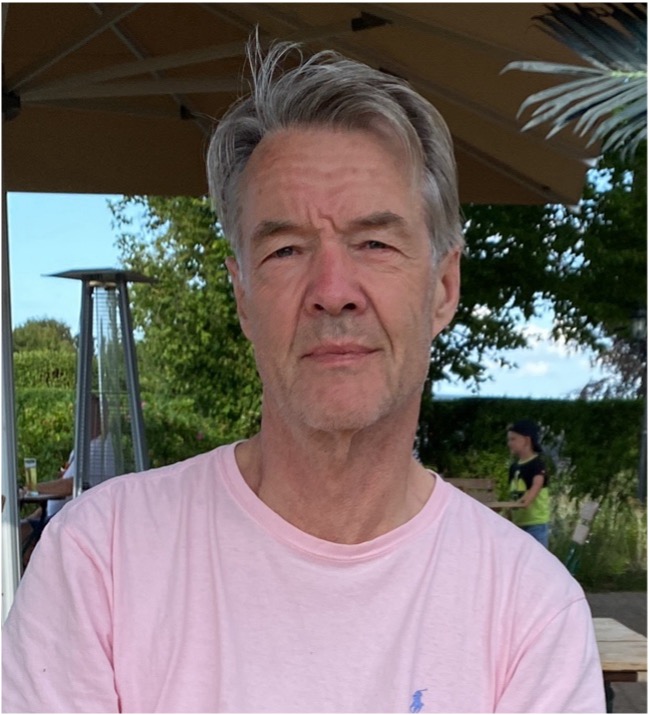
Research Summary
The Braakman-van der Sluijs lab studies molecular mechanisms of (membrane) protein folding in the endoplasmic reticulum. Ineke Braakman and Peter van der Sluijs are experts in analysis of newly synthesized protein folding, its regulation by cellular factors, and trafficking pathways in cells. Accurate and timely delivery of correctly folded proteins is at the heart of cell function, cell -cell communication, host defense, development, and human health. Misfolded proteins are the root cause of many genetic diseases and targeting misfolded proteins with small molecules emerged as a powerful approach to treat disease as shown for cystic fibrosis. Folding of membrane proteins occurs in three topologically distinct spaces and current research lines include unraveling the chaperone machineries that help to fold a membrane protein in the cyoplasm, the endoplasmic reticulum membrane and on the lumenal side of endoplasmic reticulum and on the understanding how candidate drugs can correct misfolded proteins.
5 key outputs
Together with Prof. Dr. Ineke Braakman
1. Van der Sluijs P, Hoelen H, Schmidt A, Braakman I (2024) The folding pathway of ABC transporter CFTR: effective and robust. J Mol Biol Apr 26:168591.
This review provides deep insights into CFTR folding, acquired recently and to a large extent from our lab. This information and some manuscripts in preparation will be the basis for the research in FLOW.
2. Im J, Hillenaar T, Yeoh HY, Sahasrabudhe P, Mijnders M, van Willigen M, Hagos A, de Mattos E, van der Sluijs P, Braakman I (2023) ABC-transporter CFTR folds with high fidelity through a modular, stepwise pathway. Cell Mol Life Sci. 80: 33.
We established that CFTR folds in 2 distinct stages and provided mechanistic insight that the clinical corrector drugs bypass the stage-1 defect and enable stage 2. Corrected F508del CFTR ends up with its domains assembled onto a still-defective NBD1.
3. Kleizen B, van Willigen M, Mijnders M, Peters F, Grudniewska M, Hillenaar T, Thomas A, Kooijman L, Peters KW, Frizzell R, van der Sluijs P, Braakman I (2021) Co-translational folding of the first transmembrane domain of ABC-transporter CFTR is supported by assembly with the first cytosolic domain. J Mol Biol 433:166955.
Seminal paper uncovering the mechanism of VX-809 action on cotranslational CFTR folding
4. Elstak ED, Neeft M, Nehme NT, Voortman J, Cheung M, Goodarzifard M, Gerritsen HC, van Bergen en Henegouwen PM, Callebaut I, de Saint Basile G, van der Sluijs P (2011) The munc13-4-rab27 complex is specifically required for tethering secretory lysosomes at the plasma membrane. Blood. 118:1570-8.
First paper describing how a rab27 effector complex regulates lytic granule release.
5. Hoogenraad CC, Popa I, Futai K, Martinez-Sanchez E, Wulf PS, van Vlijmen T, Dortland BR, Oorschot V, Govers R, Monti M, Heck AJ, Sheng M, Klumperman J, Rehmann H, Jaarsma D, Kapitein LC, van der Sluijs P (2010) Neuron specific Rab4 effector GRASP-1 coordinates membrane specialization and maturation of recycling endosomes. PLoS Biol. 8:e1000283.
First paper describing role of rab domain coupling in AMPA receptor recycling in neurons and its significance in maintaing spine morphology and synaptic plasticity.
Dr. Evan Spruijt, Radboud University, Nijmegen
e.spruijt@science.ru.nl
Project Involvement
WP1 Aim 2: Inventory of QC networks: What is the proteostasis landscape of LoF and GoF clients?
WP2 Aim 2: Decision making on folding versus aggregation and aggregation versus aggregation.
WP3 Aim 1: Physicochemical control over the fate of client proteins.
WP3 Aim 3: Unified theory for protein QC/triage.

Research Summary
Research in the Spruijt lab is focused on elucidating the role of biomolecular condensates in cellular organization, and by extension, the origin of life. Combining biophysics, chemistry and cell biology, the group has developed several pioneering condensate model systems both in vitro and in vivo that recapitulate key properties of cellular condensates. The group uses these model systems to investigate which physicochemical principles underlie condensate formation, size control, compositional diversity and interaction with membranes. Moreover, the group has recently demonstrated that condensates can both accelerate and slow down the aggregation of proteins, including α-synuclein, and that the condensate interface plays a crucial role in this. In FLOW, we will investigate if and how chaperone activity can be modulated by biomolecular condensates.
5 key outputs
1. Lipiński WP, …, Spruijt E (2022) Biomolecular condensates can both accelerate and suppress aggregation of α-synuclein. Sci Adv 8:abq6495.
First evidence of biomolecular condensates being able to either accelerate or slow down aggregation of α-synuclein.
2. Visser BS, Lipiński WP, Spruijt E. (2024) The role of biomolecular condensates in protein aggregation. Nature Rev. Chem.; accepted.
Review about the mechanisms by which phase-separated condensates can influence in protein aggregation and protein quality control.
3. Van Haren MHI, Visser BS, Spruijt E. (2024) Probing the surface charge of condensates using microelectrophoresis. Nature Communications; 15, 3564.
Method to determine the surface charge of biomolecular condensates and observation that ATP can lower the condensate surface charge and suppress heterogeneous aggregation of α-synuclein.
4. Joosten, J., Van Sluijs, B., Vree Egberts, W., Emmaneel, M., Jansen, P.W.T.C., Vermeulen, M., Boelens, W., Bonger, K.M., Spruijt, E. (2023) Dynamics and composition of small heat shock protein condensates and aggregates. Journal of Molecular Biology. 435, 168139.
Stoichiometry between HspB2 and HspB3 determines the formation of liquid-like or solid-like inclusion bodies in cells, and APEX proximity labeling can be used to determine the composition of HspB2 condensates and mixed HspB3-HspB2 aggregates.
5. Abbas M, …, Spruijt E (2021) A short peptide synthon for liquid-liquid phase separation. Nat Chem 13:1046-54.
Design of a minimal motif of liquid-liquid phase separation by single peptide-based compounds and first demonstration of the rate enhancement of anabolic reactions by biomolecular condensates.
Dr. Katarzyna (Kasia) Tych, University of Groningen
k.m.tych@rug.nl
Project Involvement
WP2 Aim 1: Characterize and set the stage for client proteins in vitro.
WP2 Aim 2: Decision making on folding versus aggregation and aggregation versus aggregation.
WP2 Aim 3: Decision making on folding versus degradation.
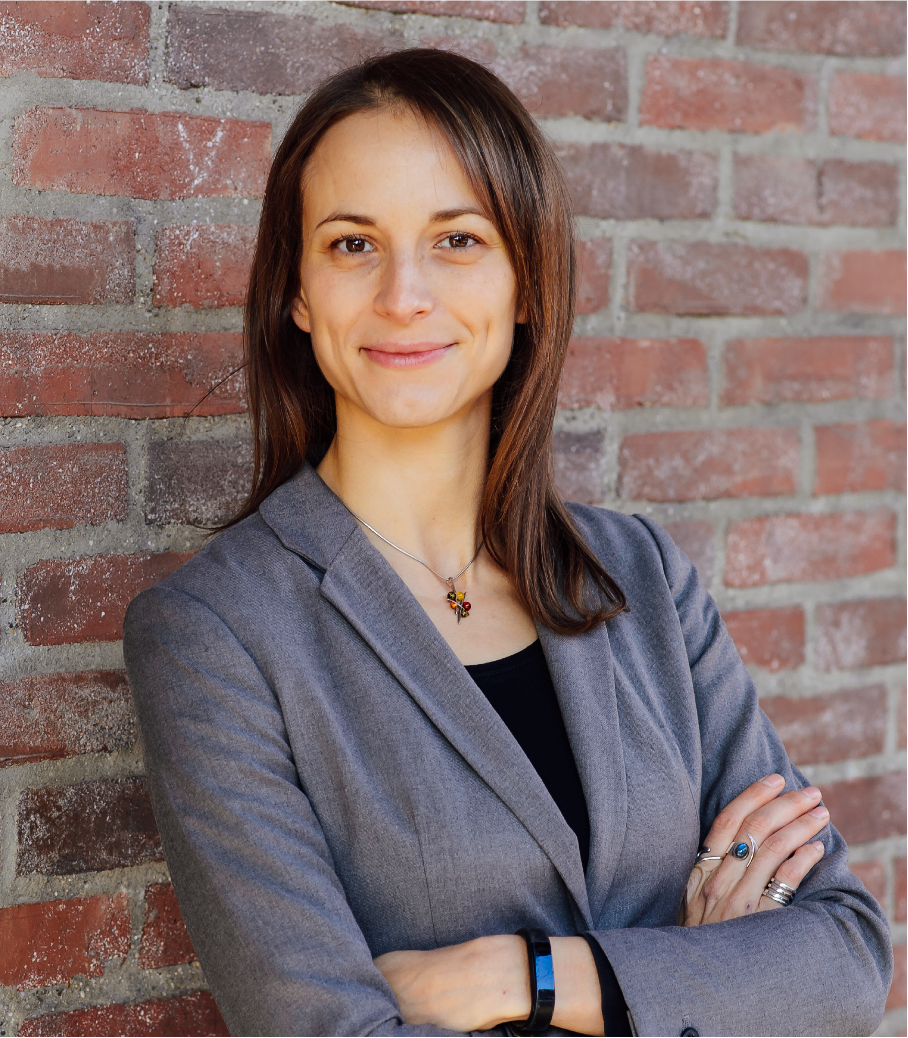
Research Summary
The KT lab focuses on studying the dynamics of biological macromolecules on the single-molecule level. A biological macromolecule’s structure defines its biological function within a cell, however, function is a dynamical process. Therefore, to understand how a biological macromolecule functions, we must also understand how it moves. Using single-molecule measurements of proteins, it is possible to directly observe and manipulate their motions, and to study how these are influenced by interactions with other molecules. We do this using a range of single-molecule methods, especially the optical tweezers, fluorescence microscopy and mass photometry. Through the application of these techniques we can uncover otherwise inaccessible details of the functional cycles of molecular chaperones such as Hsp90, addressing questions such as how they act on their substrates and the roles that other interacting chaperones play.
5 key outputs
1. Tych K*, Rief M* (2022) Using single-molecule optical tweezers to study the conformational cycle of the HSP90 molecular chaperone. Optical Tweezers pp. 401-25 Humana, New York, NY.
We outlined optical-tweezers-based methods for probing the different aspects of the conformational cycle and inter-domain interactions of HSP90.
2. van der Sleen LM, Tych K (2021) Bioconjugation strategies for connecting proteins to DNA-linkers for single-molecule force-based experiments. Nanomaterials 11:2424.
We describe various methods for preparing proteins to be studied using the optical tweezers.
3. Girstmair H, Tippel F, Lopez A, Tych K, …, Buchner J (2019) The HSP90 isoforms from S. cerevisiae differ in structure, function and client range. Nat Commun 10:1-5.
Despite having a sequence identity of 97%, the constitutively expressed Hsc82 and the stress-induced HSP82 exhibit differences in client range, refolding capability and conformational cycle processivity.
4. Jahn M, Tych K, …, Rief M (2018) Folding and domain interactions of three orthologs of HSP90 studied by single-molecule force spectroscopy. Structure 26:96-105.
In this publication we were able to show clear differences in the inter-domain interactions and mechanical stabilities of three different orthologues of HSP90, observing a surprisingly stable linker between the N-terminal domain and the middle domain of the endoplasmic reticulum HSP90 (Grp94). We suggest that this plays a role in the mechanical coupling of the structure for Grp94 which, unlike HSP82, does not have cochaperones which are known to regulate its large-scale conformational changes.
5. Tych K, …, Rief M (2018) Nucleotide-dependent dimer association and dissociation of the chaperone HSP90. J Phys Chem B 122:11373-80.
We demonstrated that nucleotide binding in the N-terminal domain of HSP82 has a tabilizing effect on the dimerization interface in the C-terminal domain.
Dr. Anne Wentink, Leiden University
a.s.wentink@lic.leidenuniv.nl
Project Involvement
WP2 Aim 1: Characterize and set the stage for client proteins in vitro.
WP2 Aim 2: Decision making on folding versus aggregation and aggregation versus aggregation.
WP3 Aim 1: Physicochemical control over the fate of client proteins.
WP3 Aim 3: Unified theory for protein QC/triage.
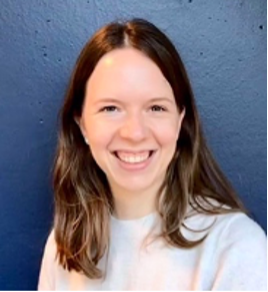
Research Summary
Molecular chaperones are important quality control factors that ensure proteins fold to their native state and maintain this conformation throughout their lifetime. When things go wrong, chaperones can prevent and reverse protein aggregation and promote the degradation of damaged proteins. A failure to do so can lead to pathological protein aggregation into amyloid fibres that are a hallmark of neurodegenerative diseases such as Alzheimer’s and Parkinson’s disease.
The research of Anne Wentink’s group aims to understand the role of the Hsp70 chaperone in the formation, clearance and propagation of amyloid fibres and the key role of co-chaperones in enabling these diverse Hsp70 activities. To do this, we use a combination of structural biology (NMR spectroscopy and Electron Microscopy), fluorescence-based activity and binding assays, and cell biology techniques. The mechanistic insights into this fundamental process of protein quality control inspire novel interventions to harness this activity for beneficial therapeutic outcomes.
5 key outputs
1. Beton JG, Monistrol J, Wentink AS, …, Saibil HR (2022) Cooperative amyloid fibre binding and disassembly by the HSP70 disaggregase. EMBO J 41:e110410.
Visualize the chaperone mediated disaggregation process in real time by AFM and cryo-EM providing crucial insights into kinetics, processivity and directionality of the disaggregation process.
2. Wentink AS, …, Bukau B (2020) Molecular dissection of amyloid disaggregation by human HSP70. Nature 587:483-8.
Step-by-step mechanistic breakdown of the amyloid disaggregation process, identifying a novel role for HSP70 cochaperones in the assembly of a disaggregation competent HSP70 complex.
3. Faust O, Abayev-Avraham M, Wentink AS, …, Rosenzweig R (2020) HSP40 proteins use class-specific regulation to drive HSP70 functional diversity. Nature 587:489-94.
In depth analysis of the structural difference between class A and B JDP co-chaperones and the first demonstration why only DNAJB1 supports amyloid disaggregation.
4. Nachman E, Wentink AS, …, Nussbaum-Kramer C (2020) Disassembly of Tau fibrils by the human HSP70 disaggregation machinery generates small seeding-competent species. J Biol Chem 295:9676-90.
First demonstration that material released during disaggregation of Alzheimer’s associated tau fibrils by the human HSP70 disaggregase can trigger seeded aggregation in a cell culture model, highlighting the double-edged nature of protein quality control in neurodegeneration.
5. Wentink AS, Nussbaum-Krammer C, Bukau B (2019) Modulation of amyloid states by molecular chaperones. CSH Perspect Biol 11(7):a033969.
Describes the state of the art of our current understanding of the various mechanisms by which molecular chaperones can act during and after protein aggregation into amyloid fibrils.
